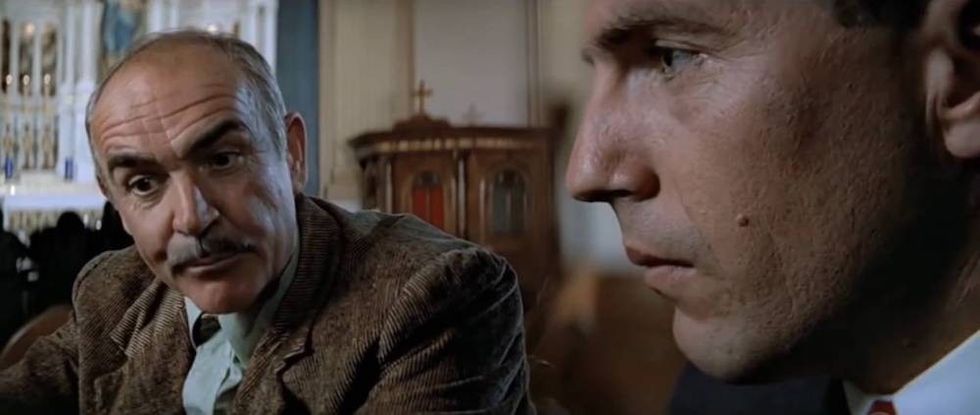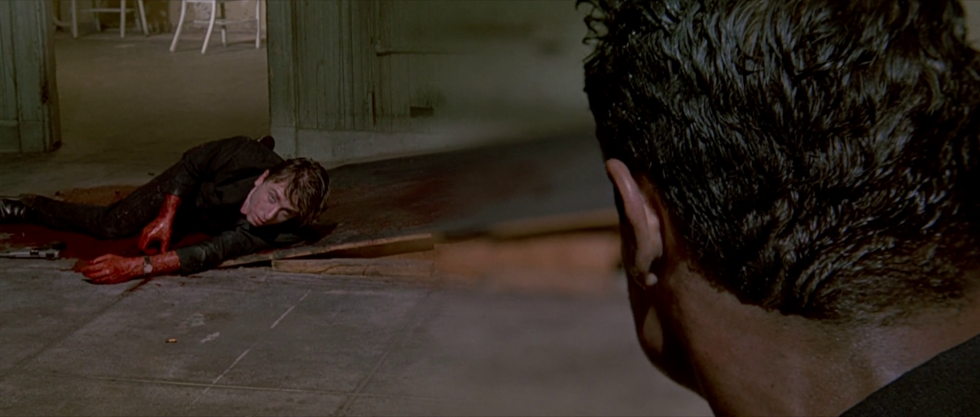Taking a Closer Look at the Use of Split Diopters in Film
Who is using them and why?

'All the President's Men'
If you've ever been watching a film, say Carrie or Reservoir Dogs, and you've seen a shot that had incredibly deep focus, then maybe you were looking at a shot that used a split focus (or split field) diopter.
These lens attachments produce a signature look that puts objects near and far into focus, a look that made Gregg Toland a legend, and later swept over the filmmaking world in the 70s. Vashi Nedomansky of Vashi Visuals takes a look at the use of split focus diopters throughout cinema, and picks out all 15 shots from Brian De Palma's 1981 film Blow Outthat use one.
Today, we're going to go over split diopter shots in cinema.
Let's get started.
What is a Split Diopter shot?www.youtube.com
What is a Split Diopter Shot?
A split diopter shot is a cinematic technique that achieves a unique visual effect by using a special lens filter. This filter, the split diopter, is a half-circle of glass that attaches to the camera lens. It essentially splits the focus of the lens, allowing for two distinct focal planes within a single shot.
How it Works:
- The split diopter divides the lens into two sections: one with the filter and one without.
- The section with the filter becomes nearsighted, focusing on objects in the foreground.
- The section without the filter remains farsighted, focusing on objects in the background.
- This creates a shot where both foreground and background elements are in sharp focus, while the space between them remains out of focus.
Visual Effect:
The split diopter shot creates a striking visual contrast, with two distinct areas of focus separated by a blurry line. This effect can be used for various purposes:
- Emphasizing duality or conflict: The split focus can represent two opposing forces or ideas.
- Highlighting relationships: It can visually connect two characters or objects despite their physical distance.
- Creating a sense of depth: The sharp focus on both foreground and background enhances the perception of depth within the frame.
- Stylistic choice: It can simply be a visually interesting technique to add flair to a scene.
Who's Using These shots?
Maybe you've used split focus diopters in your own work, so you're aware of the great shots they produce. But, for those who aren't familiar with them or have never considered using them in your films, many, many movies, especially in the 70s and 80s, used split diopters to get that deep focus look. Probably the most famous use of diopters is in Orson Welles' Citizen Kane, but All the President's Men, The Thing, and many of De Palma's films also utilize the effect.
Since split focus diopters are half convex glass, when attached to your camera's lens, it makes one side nearsighted, and the other farsighted. What this allows you to do is focus on multiple planes -- you could have objects in the foreground and background completely in focus. This also means that the staging of your scene must be copacetic.
The way that many cinematographers use this is to add a little mystery or uncertainty to their shot. Since our eye doesn't see things in this way naturally, it can be a jarring and disorienting experience when it does. In fact, some shots look almost like two separate images juxtaposed together, which immediately adds a layer of fantasy.


In the shot from Reservoir Dogs above, you can see that the split diopter creates a clear line down the frame, which can be masked using several techniques, like shooting the split against vertical lines or darkness.
Vashi has made a video that highlights all 15 shots from Blow Out, which might help you get a better idea of what a split diopter can do for your films. Check it out below.
While split diopters were more commonly used in the past due to limitations in lens technology, they have become less frequent with the advent of digital cameras and advanced focusing techniques. However, they remain a valuable tool for filmmakers seeking specific visual effects and stylistic choices.
What is your experience with split diopters? What are your favorite shots from films that utilize them? Let us know below in the comments.
Link: Splitting The Focus in De Palma’s ‘Blow Out’ -- Vashi Visuals













